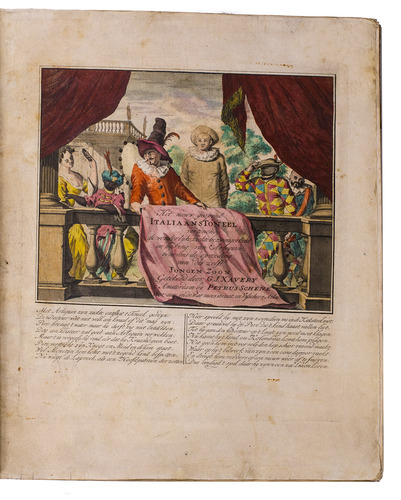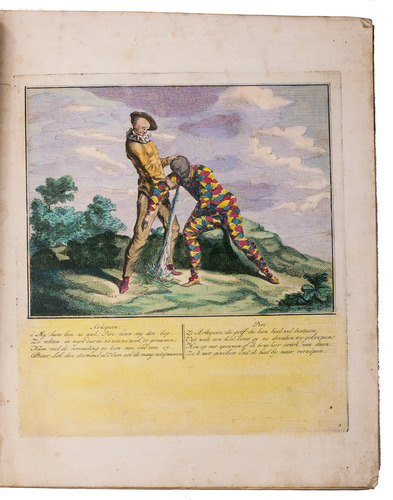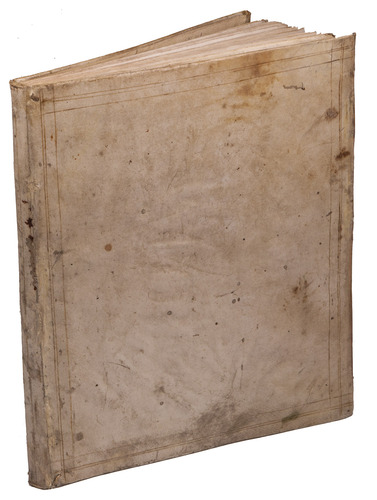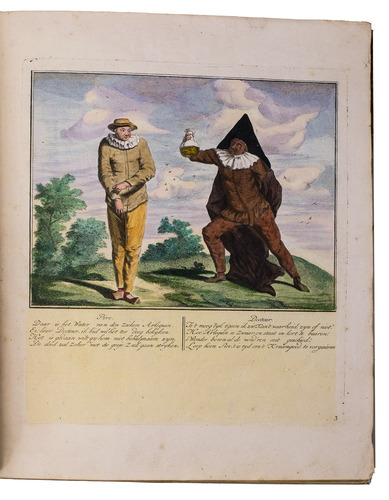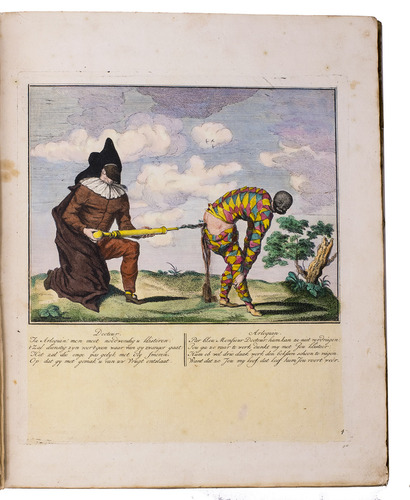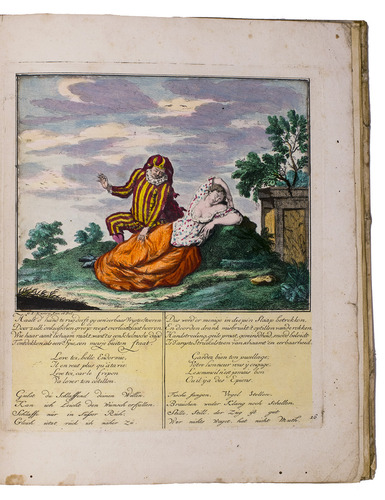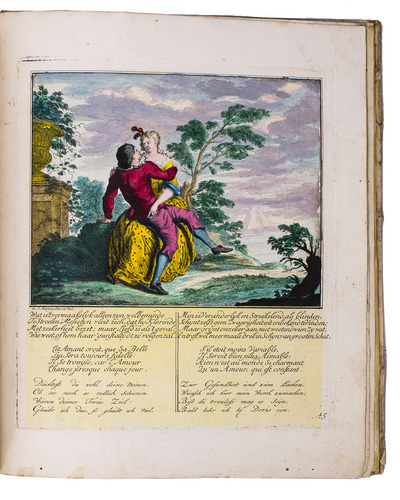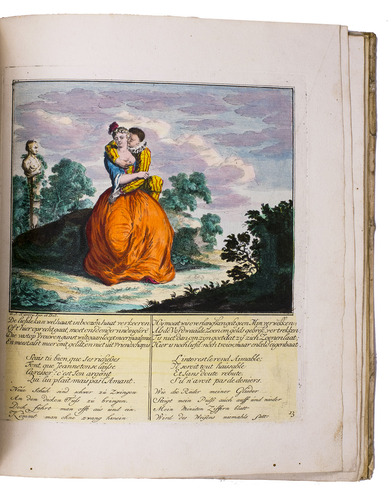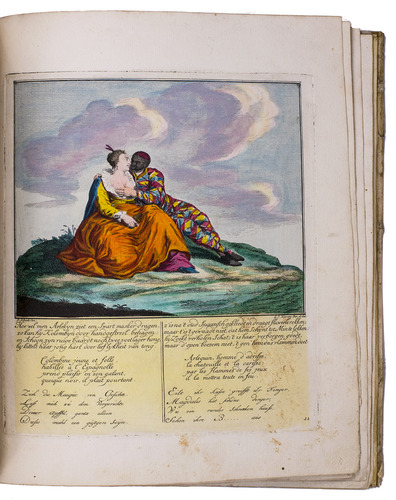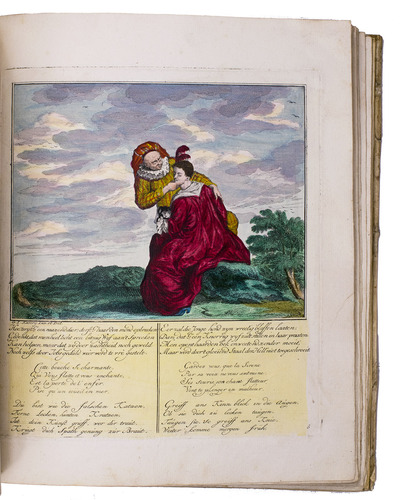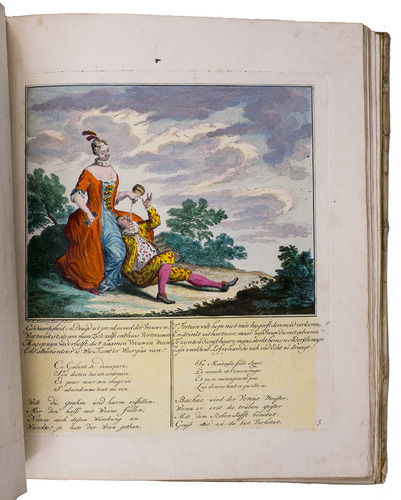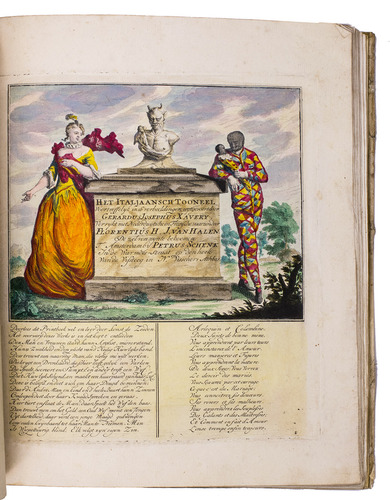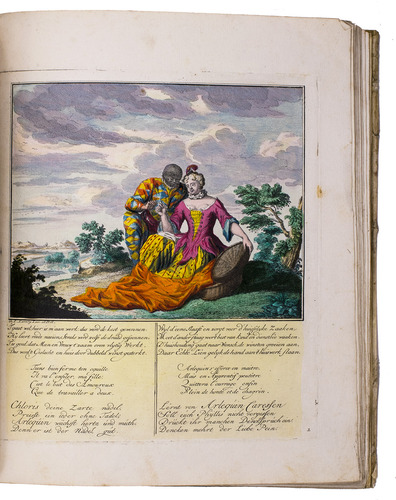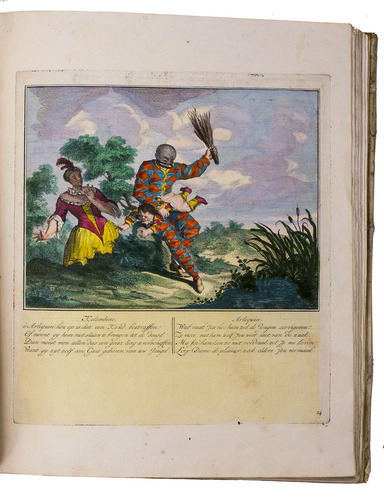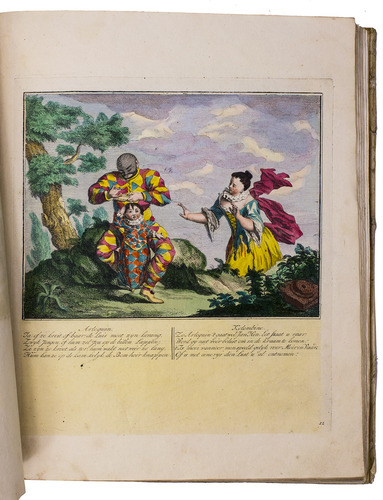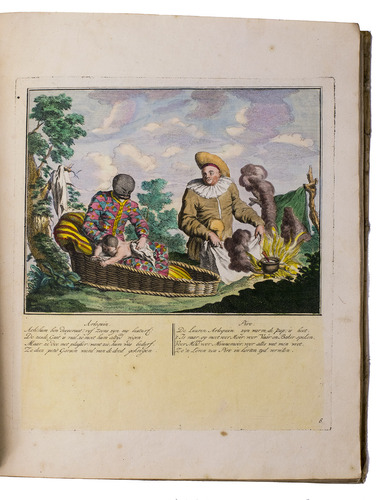XAVERY, Gerard Joseph.
Het nieuw geopend Italiaans tóneel, vertonende de wonderlijke ziekte bezwangerheid en baring van Arlequin: benevens de opvoeding van des zelfs jongen zoon.
With: (2) XAVERY, Gerard Joseph. Het Italjaansch tooneel voortreffelijk in 16 verbeeldingen uytgevoert ..., verrijkt met Nederduytsche en Fransche vaarzen door Florentius H. J. van Halen.
Amsterdam, Petrus Schenk II, [1728?] & [1735?]. Royal 4to (30.5 x 26 cm). With 2 engraved title-prints, each followed by 16 numbered prints (pictorial images ca. 15 x 19 cm; plate size ca. 23.5 x 21 cm), with verses engraved in the feet of the plates. With all 34 engravings coloured by a contemporary hand and varnished, probably for the publisher. Contemporary vellum. [1], 16; [1], 16 engraved ll.
€ 25,000
Rare complete set of the first and only editions (excepting an abridged English edition of part 1, ca. 1760) of the only two Arelquin (Harlequin) print series by the Antwerp painter in The Hague, Gerard Joseph Xavery (1700-1747), one of the earliest original native Dutch examples the so-called Italian Commedia dell'arte, with texts in verse by Florentius H. J. van Halen (active ca. 1720-1739). We have located only 5 other copies with both parts and in 2 of those part 2 appears to be incomplete or defective.
Both parts probably take inspiration from French sources in the Italian style, such as Gherardi, Le théâtre Italien (Paris, 1694) and the various theatrical performances known as "Théâtre de la foire", performed at annual fairs in France, but they are not simply translations and at least part 1 seems to form a complete original story. The most important character in both series is Harlequin, here depicted with his entire head black rather than just a mask around his eyes, which might have led an 18th-century reader to think of a Moor and a modern reader to think of a 19th-century black-face minstrel.
In the first series Harlequin vomits, the doctor checks his pulse, examines his urine, gives him an enema and discovers he is pregnant! Harlequin then lays 6 eggs, brooding them in a nest, and babies hatch out. He raises the one that survives, cleaning his bottom, breast-feeding him and teaching him to walk and read, but Harlequin is lazy and impatient, beats the child and ignores the admonitions of the doctor, Piro (Pierrot) and Kolombine (Columbina). Scharmouchi (Scaramouche) also makes a brief appearance. The second series centres on foolish love, with women succumbing to the amorous advances of men who eventually abuse them, spend their money, get drunk or visit whores. The characters once again include Harlequin, Pierrot and Columbina but show a wider variety than the first series.
With the first title-page slightly dirty, stains in the foot of 3 leaves and a few small marginal defects, but still in good condition, with large margins and with the colours fresh and bright. The binding is somewhat wrinkled and spotted, with some tiny tears at the fore-edge, but also still good. R.L. Erenstein, "De invloed van de Commedia dell'arte in Nederland tot 1800", Scenarium V (1981), pp. 91-106, at p. 103; Hollstein XXV, Schenck 1949-1982; KVK & WorldCat (7 & 6 copies, incl. at least 1 incompl. copy of part 2); STCN (1 & 2 copies).
Related Subjects:
















